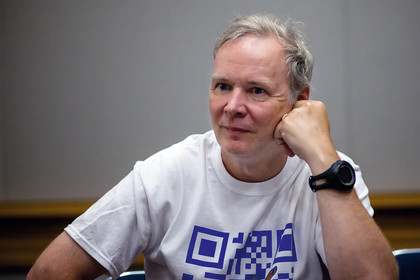How the co-creator of MySQL came to love databases
We meet Monty Widenius, the man who put the 'M' in LAMP
LXF: Lots of people would think you would, though.
MW: But back then people were really scared about releasing code, because anyone could just take it. But we released MySQL under a dual licence, so that we could be sure that if somebody wanted to use it free, and in-house, it was perfectly fine. We didn't care. But nobody could make money with it without having to involve us.
LXF: You didn't use the GPL?
MW: The GPL did exist, but we weren't using it, because that would be a big risk for a small company; so we had a licence that basically said 'you can use the source code, you can use it for anything, but if you make money with it please contact us and then we'll figure out how to do it'. And you could also buy a commercial version to do whatever you want.

LXF: So you did get people calling and saying they'd like to use it commercially?
MW: Yes. We made the licence more free in the middle of '98. We had a Windows version and then we said the Windows version - that Linux would be more free. The Windows version, we said that this is shareware licence. A shareware program. You should pay us $200 after one month if you use it, or get a very bad conscience. Your choice.
Then we had a web page on which people could register, and then they could send in a fax to pay $200, and the fax machine went continuously. So we were able to grow on that strategy from two people to 15 in 2000 by just the Windows version.
Get daily insight, inspiration and deals in your inbox
Sign up for breaking news, reviews, opinion, top tech deals, and more.
Then in '99 I got so many complaints from people: asking why we weren't using the GPL. By then we thought that we had so much money in the bank we could afford to take a hit.
LXF: You still saw the GPL as taking a hit?
MW: Yes, because as before, if you made money with our software you had to come to us. We didn't know that if we released MySQL under the GPL that people would be able to use it without coming to us. And our income did drop for two months to more than half, but within two months we were up to where we were originally. That's because we had such a big user base, and people were so happy with the GPL, so we kinda got more customers because of that. But in the initial start-up phase, we could never have had that.
LXF: Would you do the same now?
MW: We would do it again now with a dual licence, which we call a business source, which means that you say that for the next three years, here are the rules under which you can use the software. You can have any rules, it's not open source. After three years, this becomes BSD and then you can use it freely. And that means people can use it. You get the same trust as with open source.
LXF: Like a mental investment?
MW: They are not going away, you can still fix bugs and everything else. You just know that if you use it for the next three years, then you have to kind of give something back. And then the agreement can be something that makes sense for a business, because then you are committing to open source, but you are also telling your users that you need money to be able to pull it off. And I think that is a reasonable mix.
LXF: How long have you been investing in open source projects?